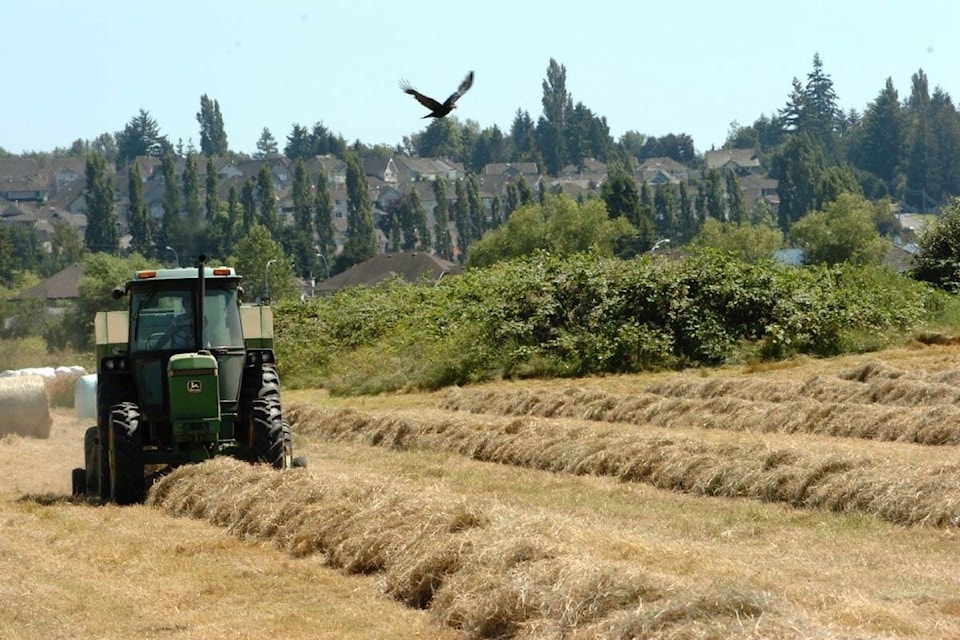Recent rains have dampened wildfires in some parts of the province, but government says it hasn't been near enough to ease drought conditions that plague almost all regions of B.C.
According to provincial figures, 26 per cent of the province is experiencing the second-worst level of drought while another 13 per cent (Vancouver Island, Bulkley-Lakes, and Upper Fraser West) is at the worst level.
Speaking Wednesday (Aug. 21), Minister of Water, Land and Resource Stewardship Nathan Cullen urged people to reduce their water consumption. He said B.C. is in a better place this year than in August of last year, but that it doesn't mean people should be complacent.
He and B.C. Emergency Management Minister Bowinn Ma provided an update on wildfire activity and drought conditions on Wednesday.
Of B.C.'s 32 water basins, just one 91������Ƶ� the Northwest 91������Ƶ� has "sufficient water to meet socio-economic and ecosystem needs" according to the provincial drought classification system. Another eight basins are experiencing Level 1 or Level 2 drought conditions, meaning adverse impacts are rare or unlikely, while 12 are at Level 3, meaning impacts are possible.
Seven basins are classified as Level 4, where adverse impacts are likely, and four are at Level 5, where hits to regional socio-economic and ecosystem needs are almost certain.
Concern for migrating salmon
Cullen said voluntary measures to conserve water remain crucial to sustaining water flows that support both human uses as well as aquatic life, including salmon. He added that they may issue water conservation orders if voluntary actions don't prove to be enough.
"(Any) temporary restriction orders that would be issued by my ministry are taken very deliberately and they would include things like local knowledge, the best science, as well as what the socio-economic impacts are," he said. "We don't have any (restrictions) right now...but there are a number of areas around the province that have historically vulnerable fish populations that are also sitting with worrisomely low water levels in their streams."
It's a concern the BC Watershed Security Coalition raised in their own statement on Wednesday. The coalition said record-low flows in some watersheds combined with higher-than-normal water temperatures is threatening wild salmon populations.
Salmon currently migrating up the Fraser and Chilcotin rivers are further being challenged by the fallout of a July landslide, which initially blocked the water systems before releasing a surge of sediment.
A recent report from the Tsilhqot91������Ƶ�in National Government's emergency salmon task force found that debris and sediment from the slide are 91������Ƶ�dramatically91������Ƶ� impacting Sockeye and Chinook salmon spawning runs. It said fish monitoring equipment has only detected 31 Chinook and 16 sockeye passing through the slide site at a time when thousands of Sockeyes should be moving through.
READ ALSO:
Cullen said the government is monitoring the situation very closely with local First Nations, but could not offer any damage estimates at this stage.
"What we hope for of course is that nature heals itself through this passage and salmon are able to get through and spawn (and) people are able to harvest as well. But if that is not possible because of the turbidity of the water, because of the state of the water and the dirtiness of it, we are preparing options with First Nations and local government to make sure we have another solution in place."
Drought continue fuel wildfire activity
The drought conditions also continue to be a major factor in this year's wildfire season.
Ma said recent storms and rain in the southern part of the province have provided some firefighting relief, but added that much of B.C. remains extremely dry. The fire situation is still active, she said.
"Despite making progress on many fires, we are still in the core wildfire season, and we must remain vigilant and alert," she said, adding that B.C. has seen in past years just how quickly conditions can change.
According to provincial figures, 356 wildfires are burning across the province as of mid-day Wednesday. Officials say 103 of them are out of control and two blazes are wildfires of note, meaning they are especially visible or pose a threat to people or infrastructure.
Wildfires have scorched 1.01 million hectares in B.C. since April 1, making 2024 the fourth-worst year on record. Last year, wildfires burned a record-breaking 2.85 million hectares.
When asked about the difference between the 2023 and 2024 seasons, Ma said B.C. has experienced a "little bit of luck" this year when it comes to weather. She added that the province and BC Wildfire Service also took and implemented lessons from last year, which have helped them along.
Another measure of the difference in the two seasons is in how much the province spent. Whereas B.C. had put $556 million toward fighting wildfires by this time last year, this year's corresponding figure is $483 million.
-With files from The Canadian Press



